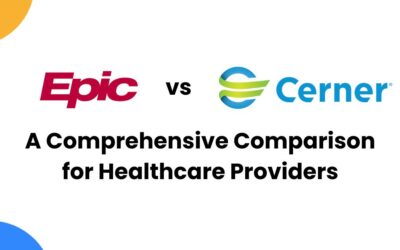How To Prevent Physician Burnout In The Age Of EHR?
The rate of EHR adoption and physician burnout have both steadily increased in recent years. When physicians are questioned for their thoughts about how to reduce burnout, the improvements to the EHR rise to the top. In this article, we discussed the 5 effective ways which help to prevent physician burnout, boost physician satisfaction in the age of EHR.
Secret Ways To Reduce Physician Burnout
1. Incorporating Medical Scribes Reduces Physician Burnout
Medical Scribes appear as one of the effective strategies to reduce physician burnout. Incorporating scribes into physician practices may improve physician’s well-being and function as a protective buffer against the demands of clinical documentation. Many clinicians have found scribes to be affordable and of great assistance in documenting and finding information in real-time.
Inviting medical scribes into physician offices during patient visits may help to give providers more face time with patients. Medical scribes can record notes throughout the visit, freeing up physicians to foster strong personal relationships with their patients. Furthermore, research suggests the use of medical scribes not only reduces physician burnout but also improves the patient-provider relationship.
RELATED: THE ADVANCED GUIDE TO EHR IMPLEMENTATION
2. EHR Training
Some physicians get frustrated with stressful tasks such as EHR implementations, changes in clinical workflows, new health IT modules, and other updates. So the only solution is providing EHR training and education to the staff to effectively and efficiently use the EHR as it stands as one of the important tools in caring for patients.
The learning curve that inevitably accompanies a new EHR system or health IT module implementation can slow providers down, reduce clinician productivity, and cause headaches for some as they try to adjust to a new way of doing things amid their duties as physicians.
Larger health care systems may have in-house training teams. Smaller practices can ask their EHR vendor for information and training. Ensuring clinical staff is comfortable utilizing EHR technology in the early days after a go-live can significantly reduce dissatisfaction with EHR use and prevent physician burnout.
3. Simplify Documentation
Most of the top EHR systems have numerous ways to personalize the user experience. The best example is text extenders/expanders. What is it and how it can be used? Text extenders is a format in which a short sequence of letters or a word can be used to auto-produce a longer string of text. When it comes to healthcare delivery, there will be treatment plans for a common condition which will be stressful work for physicians while the documentation process. So here, the personal text extenders can be very helpful for quality documentation.
RELATED: THE ULTIMATE GUIDE TO QUALITY EHR DOCUMENTATION
4. Give A Try To EHR-Integrated Voice Recognition Software
Voice recognition software could help physicians to quickly complete clinical documentation than spending lots of time typing notes manually.
Even though the voice recognition technology benefits a lot in terms of data entry, a study found that the use of software may sometimes lead to inaccurate physician notes when the words are wrongly dictated or not properly recognized. So for a successful process, the physician notes generated through voice recognition software should be reviews by both physicians and transcriptionists to ensure accuracy. However, physicians can make their own choice while choosing the software for their practice based on their satisfaction.
5. Specialize EHR Interfaces
Finally, healthcare organizations and health IT developers can help to boost physician satisfaction with EHR systems and ultimately deter the onset of physician burnout by specializing in EHR interfaces. Despite years of health IT development, physicians still struggle to navigate clunky EHR interfaces that sometimes bury important information or inundate providers with unnecessary data.
RELATED: TELEHEALTH EHR INTEGRATION IMPROVES CLINICAL WORKFLOW
Highlighting clinically relevant information based on provider specialty in EHR interfaces may help to improve the usability of physician notes and allow physicians to quickly locate the information they need most.
Final Thoughts
EHR is a great way to improve the revenue cycle while reducing physician burnout. The above mention ways will help to boost physician ratification as EHR are rapidly becoming an integral system in today’s healthcare marketplace. Also, properly implemented EHR systems also provided greater financial and clinical benefits as compared to basic systems. Streamline your practice with CapMinds customizable EHR solutions.




